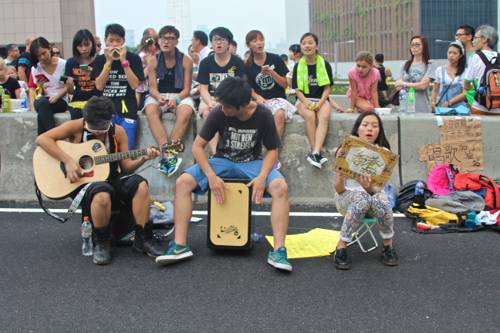
FAQ About Role of Street Theatre in Political Activism

What is street theatre in the context of political activism?
Street theatre is a form of theatrical performance that takes place outdoors in public spaces, often without a formal stage. It is a tool for political activism and social change, as it directly engages the community by bringing attention to important social and political issues. This form of theatre is highly accessible, as it removes traditional barriers to audience participation such as cost and venue, allowing political messages to reach a diverse audience.

How has street theatre been historically used for political activism?
Historically, street theatre has been utilized as an effective medium to voice dissent and rally support for political causes. For example, during the Indian struggle for independence, street theatre was used to propagate anti-colonial sentiments and educate the masses. Similarly, in the 1960s and 70s, it was a popular method used during the civil rights movements and anti-Vietnam War protests in the United States to challenge societal norms and connect with audiences on a grassroots level.

What are some contemporary examples of street theatre used in activism?
In contemporary times, street theatre continues to play a vital role in activism. Groups such as Bread and Puppet Theater in the USA and Jana Natya Manch in India use street performances to address issues like climate change, political corruption, and human rights. These performances often use humor and satire to engage the public and provoke discussion about urgent societal problems.

Why is street theatre effective in promoting political messages?
Street theatre is effective because it reaches a broad audience in a direct and often emotionally engaging way. Its informal setting allows for spontaneous interaction, breaking down the performer-audience barrier and encouraging active dialogue. This immediacy and engagement help to clarify complex issues, making political messages more relatable and memorable.

Can street theatre influence political change?
While street theatre alone may not directly lead to political change, it plays a crucial role in raising awareness, shaping public opinion, and mobilizing grassroots movements. By drawing attention to societal issues and stimulating discussion among diverse audiences, street theatre can build momentum for change and pressure policymakers to act.

What types of political issues are commonly addressed through street theatre?
Street theatre addresses a wide range of political issues, including social inequality, human rights, environmental activism, anti-war sentiments, and government accountability. Themes such as gender equality, racial discrimination, and economic injustice are frequently explored, as these performances aim to reflect and challenge the status quo.

How does street theatre differ from traditional theatre in conveying political messages?
Unlike traditional theatre, which typically occurs in a designated venue and involves a passive audience, street theatre takes place in public settings and actively engages passersby. This format allows for immediate feedback and interaction, making it a powerful tool for conveying political messages in a more direct, accessible manner. The absence of a formal stage also allows for greater flexibility in addressing current and urgent social issues.

What role does humor play in street theatre used for political activism?
Humor is a significant component of street theatre because it helps to engage audiences, diffuse tension, and make complex or contentious issues more approachable. By using satire and comedic elements, performers can challenge authority and critique societal norms while keeping the audience entertained and involved. This approach makes the political messages more memorable and can inspire serious reflection while minimizing resistance to new ideas.

How do street theatre performers engage with their audiences?
Street theatre performers engage with their audiences through direct interaction, audience participation, and by breaking the fourth wall—the conventional barrier between performers and audience. They may involve passersby in the performance, ask questions, and encourage discussion, which helps create a collaborative environment where political ideas can be explored and debated in real-time.

What are some challenges faced by street theatre performers in political activism?
Street theatre performers often face challenges such as censorship, legal restrictions, and the potential for arrest, especially in regions with limited freedom of expression. Additionally, performers might encounter hostility or indifference from the public. Weather conditions and access to performance spaces can also pose logistical difficulties, which necessitates adaptability and resilience.

What are some successful street theatre movements or groups known for political activism?
Several street theatre groups are renowned for their contributions to political activism. The Living Theatre in the United States is known for its radical, experimental performances advocating peace and human rights. In India, the group Jana Natya Manch, founded by Safdar Hashmi, is celebrated for its street performances addressing social justice and labor rights. These groups use innovative storytelling techniques to provoke thought and inspire action among diverse audiences.

How does street theatre interact with other forms of art in political activism?
Street theatre often collaborates with other art forms such as music, dance, and visual arts to enhance its impact and reach. For instance, performances may incorporate drumming or singing to grab attention, while visual artists may create murals or live paintings to complement the narrative. This interdisciplinary approach broadens the appeal of the performance and allows for more dynamic expression of political messages.

Is street theatre a global phenomenon in political activism?
Yes, street theatre is a global phenomenon and is used as a powerful tool for political activism across various cultures and contexts. From Latin America to Africa and Asia, street theatre addresses local issues while connecting with global themes of justice and equality. Each region adapts the style to suit its cultural context, making it a versatile and universal medium for political expression.

What impact does street theatre have on local communities?
Street theatre has a significant impact on local communities by fostering dialogue, encouraging civic engagement, and empowering individuals to reflect on their socio-political environment. By taking complex political messages and presenting them in an engaging manner, street theatre can inspire community action, foster solidarity among diverse groups, and contribute to a culture of activism and awareness.

How do governments typically respond to street theatre as a form of political activism?
Governments' responses to street theatre vary greatly, from support and encouragement to suppression and censorship. In open societies, street theatre might be acknowledged as an important cultural expression that stimulates public debate. However, in more restrictive environments, performances may be banned or subjected to heavy scrutiny due to their potential to mobilize dissent and challenge authority.

How has technology influenced street theatre and political activism?
Technology has significantly influenced street theatre by facilitating broader dissemination and documentation of performances through social media and digital platforms. This allows performances to reach global audiences beyond the immediate physical space, amplifying their impact. Additionally, technology can enhance performances with multimedia elements, making them more dynamic and engaging.

What skills are important for street theatre artists engaged in political activism?
Street theatre artists need a combination of performance skills, creativity, and adaptability. Acting and improvisation are crucial as performances are live and often unpredictable. Understanding the political and social context is equally important to ensure the messages are relevant and impactful. Strong communication and collaboration skills help in engaging with diverse audiences and working within a team to craft compelling narratives.

What is the future of street theatre in political activism?
The future of street theatre in political activism looks promising as it continues to adapt to changing social and political landscapes. With growing awareness and support for social justice movements, street theatre is expected to remain a powerful tool for engagement and education. Innovations in technology and collaboration with other art forms may further expand its reach and effectiveness.

How can someone get involved in street theatre for political activism?
Individuals interested in street theatre for political activism can start by joining local theatre groups or community organizations focused on social issues. Participating in workshops or training sessions can help build essential skills. It's important to stay informed about political issues, engage with the community, and collaborate with others to create impactful performances.

What role does audience feedback play in street theatre as a political tool?
Audience feedback is vital in street theatre as it provides insights into how the performance resonates with the public and contributes to the effectiveness of the political message. Performers often adapt and evolve their acts based on audience reactions, ensuring the message remains relevant and engaging. Feedback also facilitates dialogue and encourages further discussion and action within the community.
